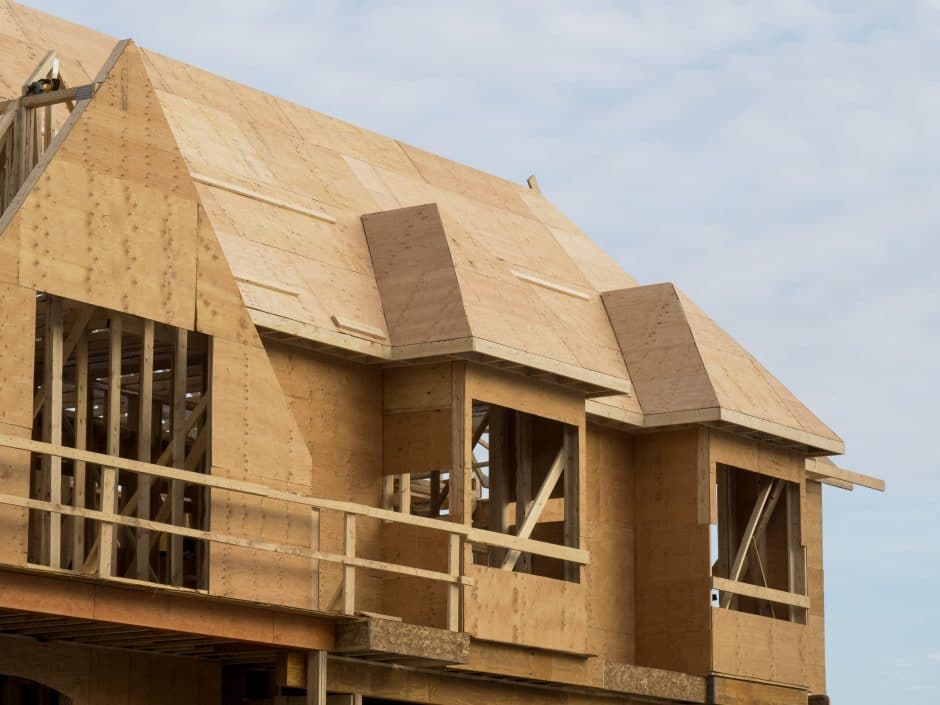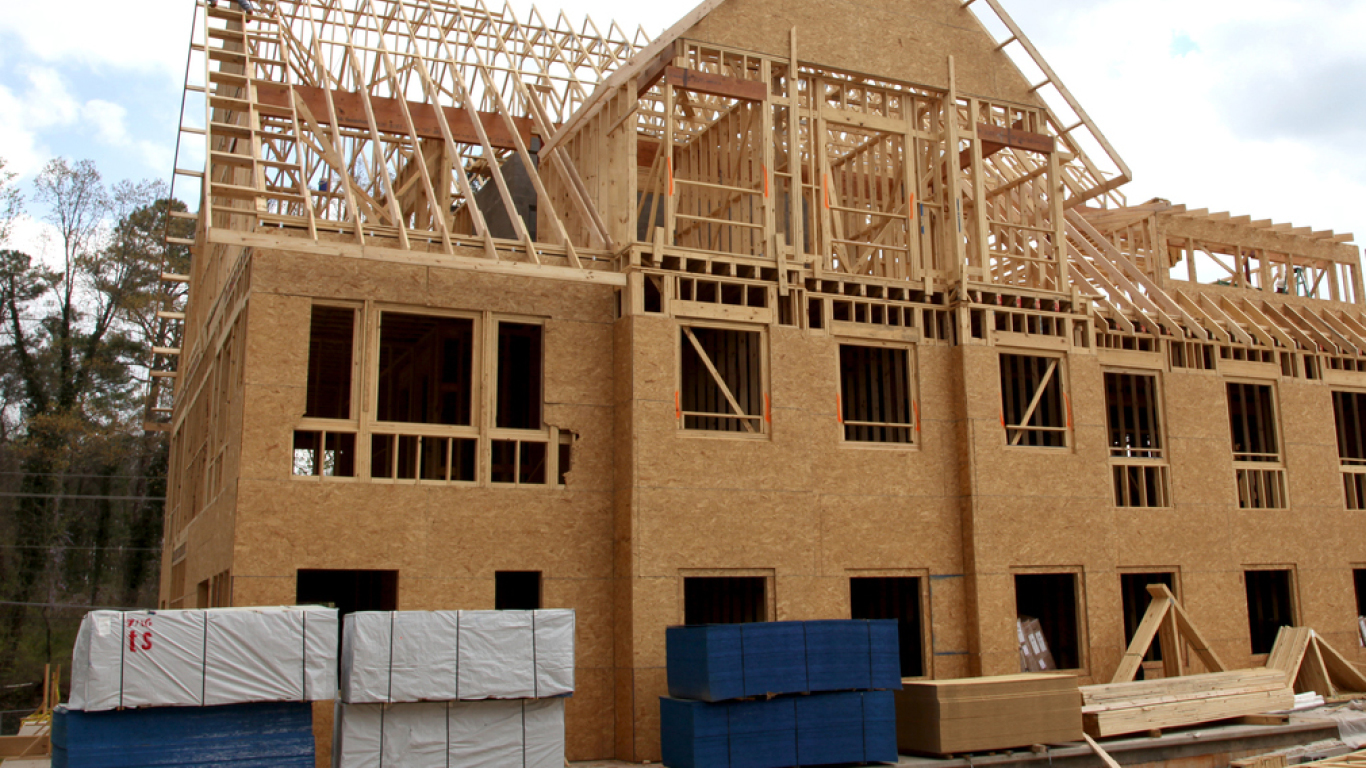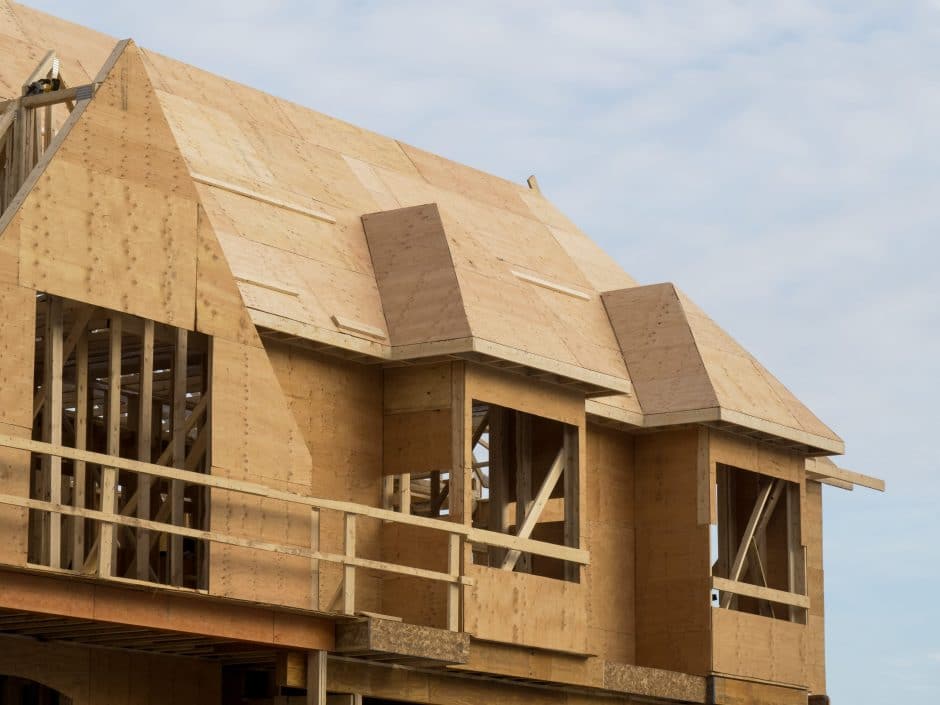Are you curious about what sheathing plywood is used for? Well, you’ve come to the right place! Sheathing plywood is a versatile building material that serves a variety of purposes in construction projects. Let’s dive in and explore the exciting world of sheathing plywood together!
When it comes to construction, sheathing plywood is like a superhero that holds everything together. It’s commonly used as a structural material for roofs, walls, and floors. So, if you’re wondering how buildings stay standing, sheathing plywood plays a crucial role in providing strength and stability.
But that’s not all! Sheathing plywood also acts as a protective barrier against the elements. It helps to keep out moisture, heat, and cold, ensuring that the building remains comfortable and well-insulated. So, whether it’s rain, snow, or intense heat, sheathing plywood has got your back!
In addition to its structural and protective qualities, sheathing plywood is also used as a surface for other materials. It provides a smooth and even base for siding, stucco, or other exterior finishes. So, next time you walk past a building, remember that sheathing plywood is the unsung hero, working hard behind the scenes to keep everything in place!

What is Sheathing Plywood For? A Comprehensive Guide
Sheathing plywood is a versatile building material that is commonly used in construction projects. It is essentially a type of plywood that is specifically designed for use as a structural material in walls, roofs, and floors. In this article, we will explore the uses, benefits, and key considerations of sheathing plywood, as well as its comparison with other types of plywood. So, if you’re curious about what sheathing plywood is for and how it can be beneficial in various applications, read on to find out more.
1. Sheathing Plywood for Structural Support
Sheathing plywood is widely used for its excellent strength and durability, making it ideal for providing structural support in construction projects. It is commonly used as a material for exterior walls, roofs, and floors, offering stability and load-bearing capabilities. The thickness of sheathing plywood usually ranges from 15mm to 25mm, ensuring adequate strength to withstand heavy loads and pressures.
One of the primary benefits of sheathing plywood is its ability to provide lateral support to structures, such as resisting wind forces and preventing racking. This is particularly important in areas prone to hurricanes, tornadoes, or high winds. Additionally, sheathing plywood enhances the overall stability of a building, reducing the risk of structural damage and ensuring the longevity of the construction.
2. Waterproofing and Moisture Resistance
Another significant advantage of sheathing plywood is its inherent resistance to moisture and water damage. It is typically manufactured using waterproof adhesives and treated with preservatives to prevent fungal decay and rot. This makes it an excellent choice for use in areas with high humidity levels or exposure to water, such as bathrooms, kitchens, and basements.
The waterproofing properties of sheathing plywood also make it suitable for exterior applications, as it helps to protect the underlying structure from water infiltration. When properly installed and sealed, sheathing plywood acts as a barrier against moisture, contributing to the overall durability and longevity of a building.
3. Energy Efficiency and Insulation Enhancements
In addition to its structural and waterproofing benefits, sheathing plywood can also contribute to the energy efficiency of a building. By serving as an additional layer of insulation, it helps to reduce heat transfer and improve the overall thermal performance of a structure. This is particularly important in climates with extreme temperatures, as it helps to maintain a comfortable indoor environment and reduces heating or cooling requirements.
Another way that sheathing plywood enhances insulation is through its ability to reduce air leakage. By covering the gaps and seams in a building’s structure, it minimizes drafts and prevents the escape of conditioned air. This contributes to energy savings and can help to lower utility bills.
So, whether you’re constructing a new building, renovating an existing structure, or working on a DIY project, sheathing plywood can serve multiple purposes. Its strength, durability, waterproofing capabilities, and insulation enhancements make it a reliable and cost-effective choice for a wide range of applications.
Now that we have explored the uses and benefits of sheathing plywood, let’s dive deeper into its comparison with other types of plywood, its installation tips, and some important considerations to keep in mind.
Comparing Sheathing Plywood with Other Types of Plywood
1. Sheathing Plywood vs. Regular Plywood
1. Sheathing Plywood vs. Regular Plywood
Sheathing plywood and regular plywood may seem similar at first glance, but they have some key differences that set them apart in terms of their intended use and performance. While regular plywood is primarily used for finishing and decorative purposes, sheathing plywood is specifically designed for structural support in construction.
One of the main differences between sheathing plywood and regular plywood lies in their thickness. Sheathing plywood is typically thicker, ranging from 15mm to 25mm, whereas regular plywood is available in various thicknesses, often ranging from 3mm to 18mm.
Another distinction is the way they are manufactured. Sheathing plywood is typically made using exterior-grade adhesives and preservative treatments to enhance its durability and resistance to moisture. Regular plywood, on the other hand, may not have the same level of moisture resistance and may require additional treatments or coatings for outdoor or damp environments.
In terms of appearance, regular plywood often features a veneer surface that can be stained or painted to achieve a desired aesthetic. Sheathing plywood, on the other hand, is often left exposed or covered with another layer of material, such as siding or roofing.
When it comes to cost, sheathing plywood is generally more affordable than regular plywood, making it a popular choice for construction projects that prioritize strength and functionality over aesthetics.
2. Sheathing Plywood vs. Oriented Strand Board (OSB)
Another material commonly used for structural sheathing in construction is oriented strand board (OSB). While both sheathing plywood and OSB are suitable for similar applications, they have their own unique properties and considerations.
One of the main differences between sheathing plywood and OSB is their composition. Sheathing plywood is made from thin layers of wood veneer glued together, whereas OSB is manufactured from strands of wood that are bonded together with resin. This difference in composition can affect their performance and durability in different conditions.
In terms of moisture resistance, sheathing plywood tends to perform better than OSB. The multiple layers of veneer make it more resistant to moisture absorption and decay. However, OSB can still be used in areas with proper waterproofing measures in place.
Cost-wise, OSB is often more affordable than sheathing plywood, making it a popular choice for cost-sensitive construction projects. However, it is important to consider the specific requirements of the project and consult with a professional to determine the most suitable material.
3. Installation Tips and Considerations
When installing sheathing plywood, there are a few important tips and considerations to keep in mind to ensure proper performance and longevity:
1. Follow the manufacturer’s guidelines: Each sheathing plywood product may have specific installation instructions and recommendations. It is crucial to follow these guidelines to ensure proper installation and to maintain any warranties.
2. Use appropriate fasteners: Choosing the right type and size of fasteners, such as nails or screws, is essential for proper installation. Consult the manufacturer’s recommendations or seek guidance from a professional to ensure compatibility and adequate fastening.
3. Ensure a proper overlap: When installing sheathing plywood sheets, make sure to leave a small gap between them to allow for expansion and contraction. Additionally, overlap the sheets to create a continuous barrier against moisture and wind infiltration.
4. Seal gaps and seams: Use a high-quality sealant or caulk to seal any gaps or seams in the sheathing plywood. This helps to prevent air and water leakage, ensuring the overall integrity and energy efficiency of the structure.
By following these installation tips and considerations, you can maximize the performance and longevity of your sheathing plywood, ensuring a sturdy and durable construction.
Additional Information
1. Applications of Sheathing Plywood
2. Advantages of Sheathing Plywood
3. Tips for Choosing the Right Sheathing Plywood
1. Applications of Sheathing Plywood
2. Advantages of Sheathing Plywood
3. Tips for Choosing the Right Sheathing Plywood
2. Advantages of Sheathing Plywood
3. Tips for Choosing the Right Sheathing Plywood
3. Tips for Choosing the Right Sheathing Plywood
Sheathing plywood has a wide range of applications in the construction industry. It is commonly used in the following areas:
– Exterior walls: Sheathing plywood provides structural support and acts as a base for exterior cladding or siding materials.
– Roofs: Sheathing plywood is often used as the decking material for roofs, providing a stable and durable base for the roof covering.
– Floors: Sheathing plywood can be used as a subflooring material, providing strength and stability to the floor structure.
– Shear walls: Sheathing plywood is utilized in shear wall construction to enhance the lateral stability of a building and resist the effects of lateral forces, such as wind or earthquakes.
The advantages of sheathing plywood include:
– Strength and durability: Sheathing plywood is designed to provide excellent strength and durability, ensuring the integrity of a structure.
– Moisture resistance: Sheathing plywood is typically treated with preservatives and manufactured with waterproof adhesives, making it resistant to moisture damage.
– Energy efficiency: Sheathing plywood contributes to the energy efficiency of a building by enhancing insulation and reducing air leakage.
– Cost-effectiveness: Sheathing plywood is generally more affordable than other types of plywood, making it a cost-effective choice for construction projects.
When choosing the right sheathing plywood for your project, consider the following factors:
– Thickness: Determine the appropriate thickness based on the structural requirements and load-bearing capacity of the application.
– Moisture resistance: Assess the level of moisture exposure and choose a sheathing plywood that provides sufficient protection against moisture damage.
– Fire resistance: If fire resistance is a concern, look for sheathing plywood that meets the required fire safety standards.
– Compatibility: Ensure compatibility with other materials and components in the construction system.
By considering these factors and consulting with professionals, you can select the most suitable sheathing plywood for your specific project needs.
Key Takeaways: What is Sheathing Plywood For?
- Sheathing plywood is a type of plywood used in construction projects.
- It is commonly used for exterior walls, roofs, and floors.
- Sheathing plywood provides stability and support to the overall structure.
- It helps protect the building from moisture, heat, and other elements.
- Sheathing plywood is also used as a base for siding materials.
Frequently Asked Questions
Welcome to our FAQ section on sheathing plywood! Here, you’ll find answers to some common questions related to sheathing plywood and its various uses. Whether you’re a DIY enthusiast or a construction professional, this guide will provide you with valuable insights. Let’s dive in!
1. How is sheathing plywood different from other types of plywood?
Sheathing plywood stands out from other plywood types because of its specific characteristics and intended use. It’s typically made with a softer wood species, like pine or fir, and has a rough, unfinished surface. This plywood is primarily used for structural purposes and is often installed on exterior walls, roofs, and floors of buildings.
Unlike hardwood plywood, sheathing plywood is not meant for furniture-making or aesthetic purposes. It’s designed to provide stability, rigidity, and support to buildings during the construction phase.
2. What are the advantages of using sheathing plywood?
There are several advantages to using sheathing plywood in construction projects. First and foremost, it adds strength and rigidity to the structure, enhancing overall stability. Sheathing plywood also serves as an excellent base for siding materials, such as vinyl or fiber cement, protecting the building from the elements.
Moreover, sheathing plywood offers good insulation properties, reducing heat loss and contributing to energy efficiency. Its large sheets also cover large areas quickly, saving time during the construction process. Additionally, its rough surface provides better grip for fasteners, ensuring secure and reliable attachment of other construction materials.
3. Can sheathing plywood be used for interior projects?
While sheathing plywood is primarily designed for exterior applications, it can also be used for certain interior projects. For example, if you’re constructing a basement or a utility room, using sheathing plywood for walls or flooring can provide additional durability and moisture resistance.
However, keep in mind that sheathing plywood’s rough texture and unfinished appearance may not be suitable for areas where aesthetics are a priority, such as living rooms or bedrooms. In such cases, it’s better to opt for other types of plywood specifically designed for interior use.
4. What is the recommended thickness for sheathing plywood?
The recommended thickness of sheathing plywood depends on the specific application and the building code requirements in your area. However, common thicknesses range from 15/32 inch (roughly 11.9 mm) to 3/4 inch (about 19 mm). It’s important to consult local building codes and follow the guidelines provided by construction professionals to ensure compliance and structural integrity.
Thicker sheathing plywood is generally used for heavy-duty structures or to satisfy higher load-bearing requirements, while thinner sheets are suitable for smaller-scale projects or non-load-bearing walls. Consulting with an engineer or architect can help you determine the appropriate thickness for your specific project.
5. Can sheathing plywood be used as a subfloor?
Yes, sheathing plywood can be used as a subfloor in many cases. Its structural strength and stability make it a suitable choice for providing a sturdy base for finished flooring materials like hardwood, carpet, or tile. However, it’s crucial to ensure that the sheathing plywood meets the necessary standards for subflooring, such as appropriate thickness and moisture resistance.
Additionally, when using sheathing plywood as a subfloor, it’s crucial to follow proper installation techniques and guidelines. This includes adequately spacing the panels to allow for expansion, fastening them securely to the underlying floor framing, and ensuring the subfloor is level and free from any moisture or structural issues.

Summary
Sheathing plywood is a type of wood that is used to cover the exterior of buildings. It helps protect the building from the elements like rain, snow, and wind. It also adds strength and stability to the structure, making it more durable. Sheathing plywood is commonly used in construction projects, especially for walls, roofs, and floors. It is easy to install and can be painted or covered with other materials for a finished look.
Additionally, sheathing plywood has different types, such as CDX and OSB. CDX is made up of multiple layers of wood glued together, which makes it water resistant. On the other hand, OSB is made from wood strands and adhesive, creating a strong and versatile product. Both types have their advantages and can be chosen based on the specific needs of the project. Overall, sheathing plywood is an important component in building construction, providing protection and strength to the structure.
